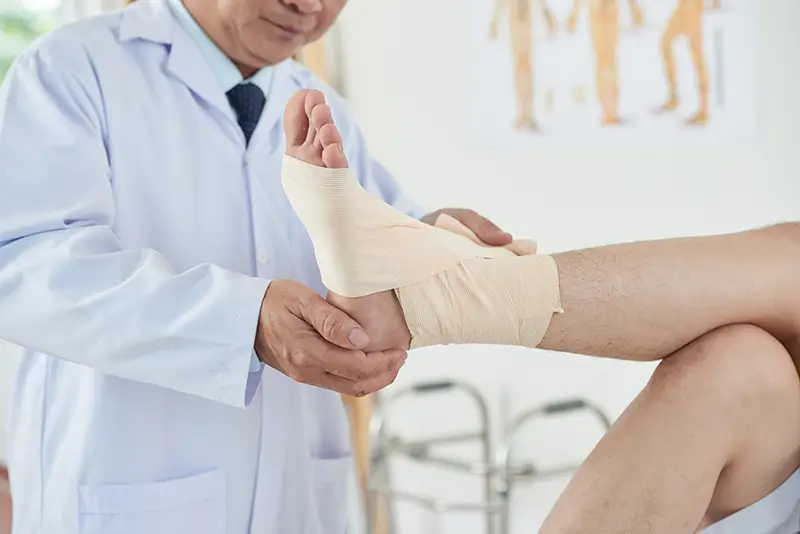Billing and coding for plantar fasciitis and its treatment demands a clear understanding of the coding guidelines and related medical codes. Healthcare practices can rely on the services of a professional medical billing company for accurate billing and coding of this condition, and timely claim submission. Let us look at the specifics of medical coding for plantar fasciitis – a common type of foot and ankle injury. Plantar fasciitis causes inflammation of a thick band of tissue (also called a fascia) at the bottom of your foot that runs from your heel to your toes. If left untreated, it may result in chronic heel pain that hinders your regular activities.
What Causes Plantar Fasciitis?
According to statistics for the year 2020, approximately 2 million patients are treated for this condition in the US every year. About 75 percent of people in the United States suffer from foot problems at some point in their lives. The condition is more common in runners. In addition, people who are overweight and those who wear shoes with inadequate support also have an increased risk of developing this condition. Normally, your plantar fascia is in the shape of a bowstring, supporting the arch of your foot and absorbing shock when you walk. When repeated stress occurs on the bowstring, small tears tend to develop in the fascia. Other factors that can increase your risk of developing this condition include – age, foot mechanics, and certain types of exercise and occupations that keep you on your feet. A stabbing pain in the bottom of your foot near the heel is one of the first symptoms of this condition. The pain will become worse after exercise, not during it. Although many people with plantar fasciitis tend to have heel spurs, spurs are not the cause of plantar fasciitis pain. As the spur is not the cause of plantar fasciitis, the pain can be treated without removing the spur.
Reach out to our expert medical billing services for seamless solutions.
Medical Codes to Report Plantar Fasciitis
Diagnosis of this condition may involve a detailed physical examination and medical history review. As part of the examination, the physician may check for areas of tenderness on the bottom of your foot. Imaging tests such as X-ray, magnetic resonance imaging (MRI) and ultrasound may be performed to identify the cause of your pain. Treatment modalities include a combination of medications and physical therapy exercises.
ICD-10 Codes
- M72 – Fibroblastic disorders
- M72.0 – Palmar fascial fibromatosis [Dupuytren]
- M72.1 – Knuckle pads
- M72.2 – Plantar fascial fibromatosis
- M72.4 – Pseudosarcomatous fibromatosis
- M72.6 – Necrotizing fasciitis
- M72.8 – Other fibroblastic disorders
- M72.9 – Fibroblastic disorder, unspecified
CPT Codes
- 0232T – Injection(s), platelet rich plasma, any tissue, including image guidance, harvesting and preparation when performed
- 0481T – Injection(s), autologous white blood cell concentrate (autologous protein solution), any site, including image guidance, harvesting and preparation, when performed
- 20550 – Injection(s); single tendon sheath, or ligament, aponeurosis
- 20552 -Injection(s); single or multiple trigger point(s), 1 or 2 muscle(s)
- 20553 -Injection(s); single or multiple trigger point(s), 3 or more muscle(s)
- 28890 – Extracorporeal shock wave, high energy, performed by a physician or other qualified healthcare professional, requiring anesthesia other than local, including ultrasound guidance, involving the plantar fascia
- 28008 – Fasciotomy, foot and/or toe
- 28060 – Fasciectomy, plantar fascia; partial (separate procedure)
- 28062 – Fasciectomy, plantar fascia; radical (separate procedure)
- 28250 – Division of plantar fascia and muscle (e.g., Steindler stripping) (separate procedure)
- 97762 – Checkout for orthotic/prosthetic use, established patient.
- 97110 – Therapeutic exercises to develop strength and endurance.
- 97140 – Manual therapy techniques (e.g., massage) to improve circulation and decrease pain.
- L4396 – Plantar fasciitis night splint
Streamline your practice with our expert medical billing services!
Incorporating lifestyle changes such as maintaining a healthy body weight, choosing supportive shoes, stretching your arches, applying ice, and getting engaged in low impact sports activities can help prevent the occurrence of heel pain that is part of plantar fasciitis. Knowing the specific medical codes related to repairing plantar fasciitis is critical for healthcare providers submitting medical claims for reimbursement from insurers. Healthcare professionals and medical coders should familiarize themselves with the coding and billing guidelines provided by the insurance companies to ensure compliance and maximize reimbursement. Partnering with an experienced medical billing and coding company is a great option for physicians to ensure accurate and timely claim submissions.






